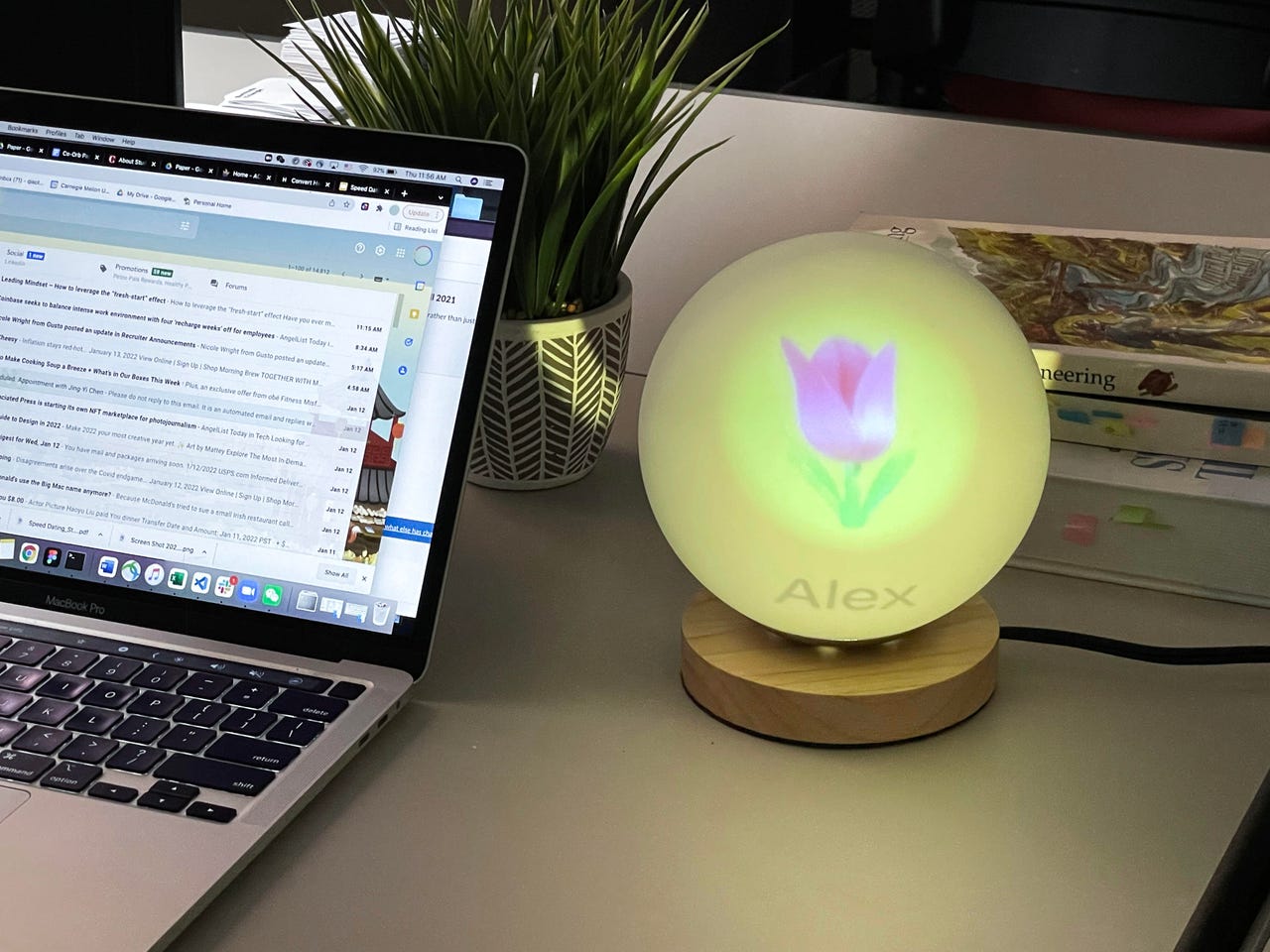Can a desk lamp increase employee gratitude?


A piece of office equipment that eavesdrops on employee conversations may sound creepy, but this one nails it through sheer charm. Students at Carnegie Mellon's Human-Computer Interaction Institute (HCII) have created a desk lamp that lights up when a user receives praise or gratitude via a workplace message platform like Slack or Teams.
The tech behind the lamp is pretty interesting. It uses natural language processing to monitor messages in normal workplace communications over messaging apps. When it spots familiar phrases linked with gratitude, such as "thank you," "appreciate", and "your help," the smart lamp asks the sender if they would like to send a thank you to their co-worker's Co-Orb. The messages arrive at the lamp via a personalized emoji and the name of the sender; when the recipient presses a button, the lamp reads the message out loud.
"You spend a lot of time with your co-workers, but you probably don't take enough time to say thank you to them, which is important in building a healthy working relationship," Lorry Tang, a student in the Master in Human-Computer Interaction (MHCI) program and member of the design team, told CMU's Stacey Federoff. "We found that a lot of people want to receive more gratitude from their co-workers, so we set out to find a solution that not only makes people happier in their work-life but can also help the overall organization have a healthier environment for everyone."
The cool thing about this is that it addresses politeness fatigue. Slack users fire off "thanks" with such ease that the sentiment can easily get lost. But a personalized message that arrives in a multisensory (and, frankly, really cute) package is appealing.
"We really wanted to present something more than a screen-based media," said Yufeng Zhao, a CMU student and member of the team.
The team drew on the principles of so-called calm technology, which uses multisensory communication modes that integrate into a person's environment non-disruptively. The idea is to use technology to make a small but powerful impact in a person's day. Testing the device within the CMU community-verified the positive impact, as well as the market potential.
"That's actually really nice; I would probably buy that," one tester said.